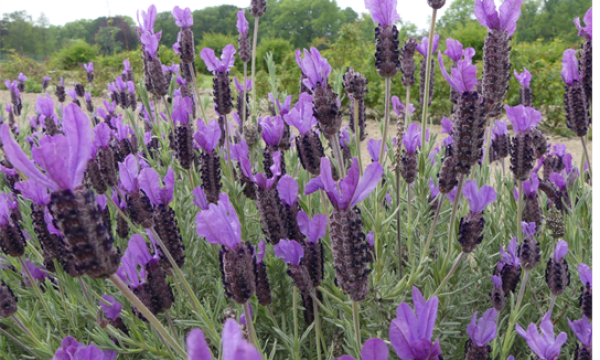Project news Plant attacker for July 2020: Xanthomonas phaseoli pv. dieffenbachiae

The araceae or arum family are sought after in Europe for their ornamental value as cut flowers and as pot and garden plants. Best known is the anthurium (Figure 1), also known as the flamingo plant, which with its glossy leaves, colored bracts and its special cob is a popular cut flower or houseplant in any interior.
Anthurium cultivation worldwide is related to the infectious bacterial disease Xanthomonas phaseoli pathovar dieffenbachiae, in short Xpd (formerly X. dieffenbachiae, X. campestris pv. dieffenbachiae. X. axonopodis pv. dieffenbachiae). Xpd is a rod-shaped gram-negative bacterium approximately 1.5 μm long and movable by means of a single polar flagellum (Figure 2). In a suitable culture medium, the bacterium forms round, slimy, yellow colonies after 2 to 3 days.

This plant pathogen has a wide host range in the arum family and can therefore cause great economic losses not only in anthurium cultivation but also in the commercial production of decorative leafy plants such as Dieffenbachia, Aglaonema, and Spathiphyllum. The pathogen is therefore strongly controlled in several countries and is on the A2 quarantine list of the 'European and Mediterranean Plant Protection Organization (EPPO)'.
Xpd infects anthurium through wounds, via stomata at the abaxial side of the leaf, but mostly via guttation openings (hydathodes) along the leaf edges. The first symptoms are slightly yellowed (chlorotic), water soaked spots along the leaf edge that quickly turn into V-shaped necrotic (dead) leaf edges (Figure 3). Once inside the leaf, the bacteria can also colonize the vascular tissue, causing a systemic infection in which the disease spreads to other parts of the plant. They can also clog the vessels, preventing water or nutrients from being moved and cause whole leaves to yellow and wilt.
It is suspected that this contagious bacterial disease has its origin in South or Central America. Apparently, the disease first spread throughout North America via infected plant material, and only later spread worldwide via the trade in ornamental plants. In anthurium cultivation it is not always clear where infections with Xpd come from. The disease can be spread in many ways including infected plants or latently (symptomless) infected plants, infected pruning knives or scissors, water splashes and aerosols.
There are no effective bactericides available for chemical control of Xpd. Anthurium cultivation in the Netherlands uses one or more biological control agents. Because of its contagiousness and pathogenic capacity, the best approach is to prevent contamination through occupational hygiene. Other solutions are the breeding for plant resistance and the use of certified plant material free of the pathogen.
There is a COST Action 'EuroXanth' that brings together all the knowledge of Xanthomonas plant diseases in order to achieve a better integrated control of plant diseases in Europe. As part of the regulation of plant quarantine organisms and for the underpinning diagnostics necessary for this, the EPPO-Q bank was set up to support phytosanitary organisations in their diagnostic activities. ILVO takes part of the curatorship for the EPPO-Q-bank Bacteria database, which also includes a detailed barcoding protocol for the identification of Xpd.



